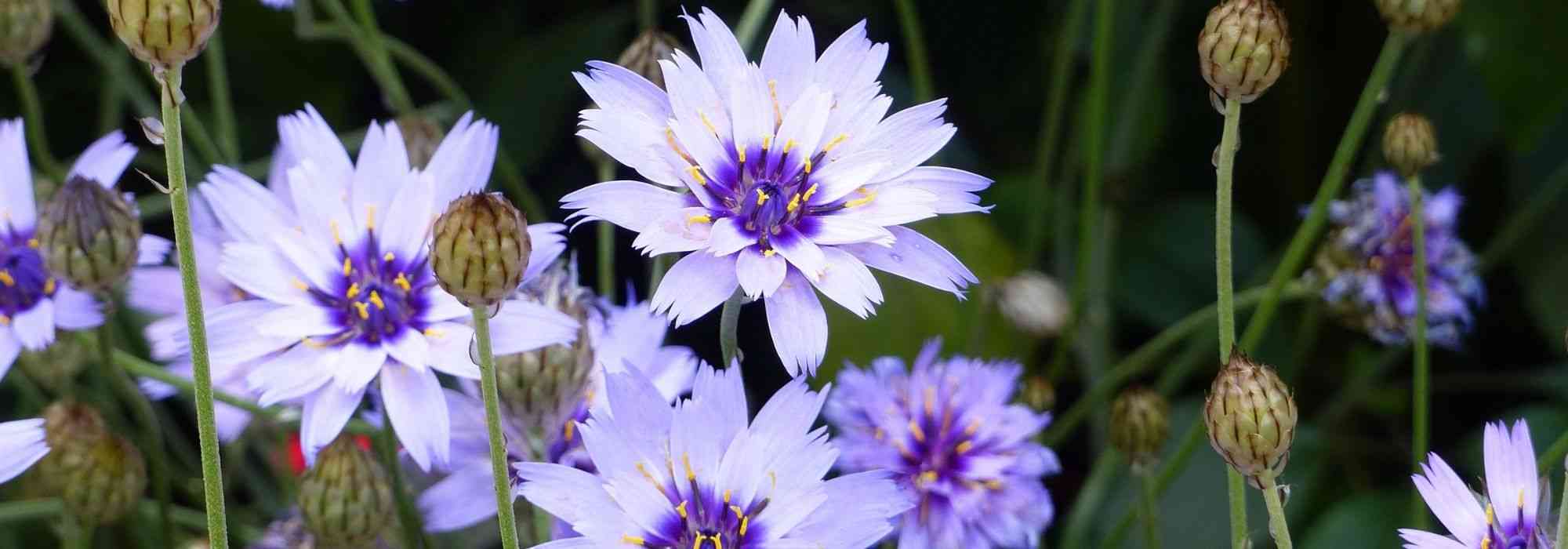
Growing Catananche in a pot
The best practices to care for a Cupid's dart in a container
Contents
Catananche (Catananche caerulea), or Cupidone, is a lovely perennial ideal for beginner gardeners. Its charming flowering, in shades of lavender blue or white, emerges in late summer from its fine evergreen basal foliage, with grey-green hues. Even when faded, its dried inflorescences are remarkable in dried bouquets. Highly drought-resistant, extremely undemanding, and hardy down to -15°C, it is a full sun plant, thriving in any well-drained soil, perfect for a holiday garden or for patios, balconies, and terraces, where container cultivation is very easy. Discover all the good practices and tips for growing Cupidone in pots!
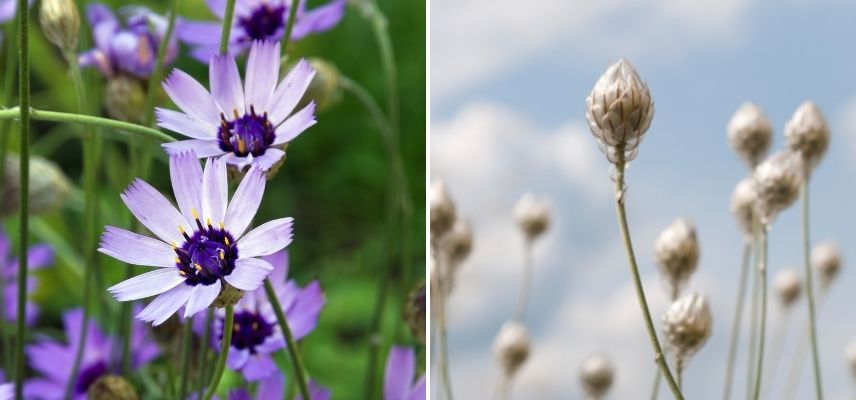
Catananche caerulea
Which pot and substrate to choose?
Type of pot and container size
- There is a very wide range of containers available for growing potted plants. When it comes to materials, prioritise unglazed terracotta or stoneware. They dry out more quickly, but their porosity allows for good gas exchange and lets the substrate breathe. Moreover, their natural hue is discreet and complements many styles. However, if you wish to add a bit of ‘pep’ and invite colour onto your balcony or terrace, there’s nothing stopping you from growing your Catananche in other types of containers, some of which offer vibrant colours. Grey ones display a lot of neutrality and modernity. To play with tones, choose a blue that matches the flowering of Cupid’s dart, or opt for contrast with orange, its complementary colour.
- Another option is to repurpose an object to turn it into a pot, allowing you to be original. An old tin can, a vintage zinc container, a chipped teapot, a worn-out basket… let your imagination guide you!
- However, be mindful of the container size. Choose one that is slightly larger than the plant to be installed. If it’s too small, the roots will quickly become cramped, and your Catananche may struggle; if it’s too large, it’s simply unnecessary, unless you decide to install several specimens or companion plants. Another crucial point is to ensure that your pot has a drainage hole at the bottom, so that water can easily and quickly drain away. If there isn’t one, it is imperative to create one or more.
 Zinc bucket, wicker basket, and terracotta pot
Zinc bucket, wicker basket, and terracotta pot
Type of substrate
Catananche is a particularly low-maintenance perennial. It is content with poor soil and very little water. Furthermore, it cannot tolerate soils that remain damp, especially in winter, risking its quick disappearance. You must therefore provide it with a well-draining substrate, which can easily be made by mixing 2/3 of a basic potting soil (or soil from your garden, regardless of its pH, as although Catananche prefers calcareous soils, it accepts neutral or acidic soils) with 1/3 of small-sized gravel or pumice. River sand, not too fine, is also a good alternative to gravel. To enhance drainage, install a layer of 3 to 5 cm of clay balls, small stones, or gravel at the bottom of the pot. Not very demanding, Cupid’s dart is satisfied with a handful of compost mixed into your substrate, but if you don’t have any, it can even do without it. It’s better to have soil that is too poor than too rich for this perennial.
When and how to plant Catananche in a pot?
When to plant?
Plants in buckets can be planted all year round, except during frost periods. However, it is preferable to plant at the beginning of spring, especially in cold and damp regions. In milder climates, you can also plant in autumn, roughly between the end of September and mid-November.
How to plant?
- Soak the root ball to saturate the substrate with water.
- Install a drainage layer at the bottom of the pot, about 3 to 5 cm thick.
- Fill with substrate and place your young plant in the centre.
- Fill in with the remaining mix and lightly firm it down.
- Mulch, preferably with a mineral material (gravel, pebbles, slate…)
What exposure for Catananche?
- Catananche is a plant that loves heat and tolerates drought. Place your pot in a bright location, even in direct sunlight, although it can tolerate partial shade (5 to 6 hours of direct sunlight during the day).
- As Cupid’s dart withstands salty sea spray very well, you can place it in a seaside garden, but avoid strong winds, which can break the flower stems.
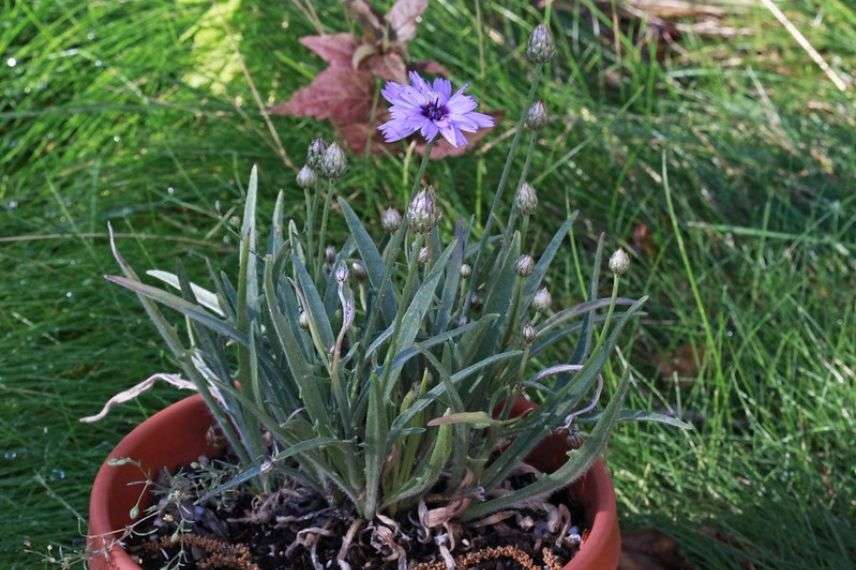
Catananche caerulea (photo Andrey Zharkikh – Flickr)
Discover other Catananche
View all →Available in 1 sizes
Available in 2 sizes
Available in 1 sizes
Available in 1 sizes
Available in 1 sizes
Maintenance, watering and fertilisation
Catananche requires minimal maintenance
Watering
When it comes to watering, wait until the substrate dries out in the top few centimetres before adding water. Depending on the region, weather conditions, and season, your interventions may be almost non-existent or slightly more frequent. In any case, it’s better to water a little less than too much. Except in summer, during intense heat, you may need to be a bit more vigilant, but rainfall in other seasons, barring exceptional cases, is generally sufficient to hydrate your plant.
Fertilisation
Very undemanding, Catananche does not need fertilising. A handful of compost at planting is more than enough, but not essential. Soil that is too rich can even shorten the lifespan of this low-maintenance perennial.
Pruning, general maintenance, and division
The basal foliage of Catananche is evergreen. If necessary, you can quickly tidy up dried or less attractive leaves at the end of winter.
The summer flowering dries beautifully, and the bracts, resembling cigarette paper and crinkling like the song of the cicada, are used in both fresh and dried bouquets. If you wish to use the inflorescences for this purpose, cut the stems at their base. If possible, at the time of flowering, you can place your pot near a flowerbed, as Cupid’s dart self-seeds, thus giving rise to new plants.
When and how to repot?
Although undemanding, Catananche may occasionally need repotting (every 3 to 4 years on average). It may become a bit too large for its pot (the roots then become cramped) or you may simply wish to obtain several plants. Repotting, which is generally done in spring (also possible in autumn in mild regions), allows you to place it in a slightly larger pot or to divide it.
- Remove the plant from its pot
- Divide if necessary into several clumps by cutting the root ball with a sharp tool
- Replant as a new plant
- Mulch and water.
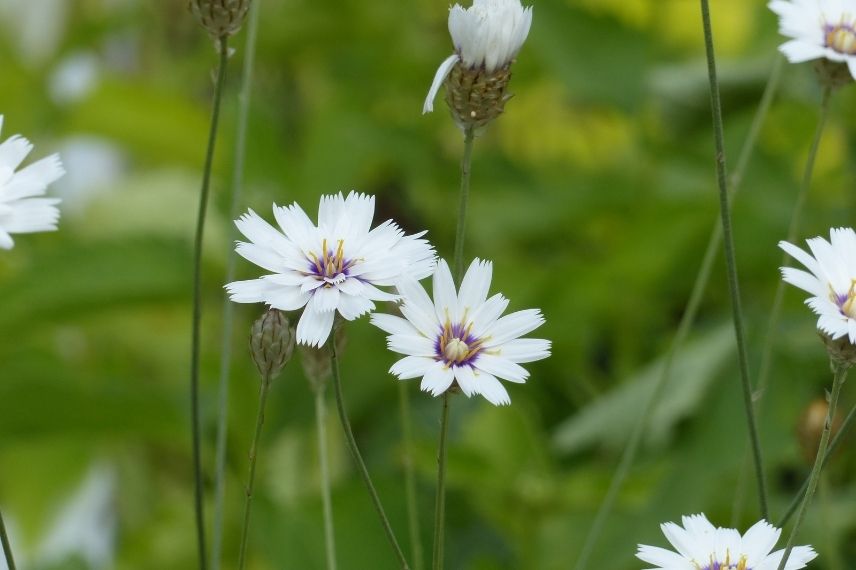
Catananche caerulea ‘Alba’
Read also
Potted plants: what is top-dressing?To go further
–> Discover our different varieties of Catananche
–> Catananche or Cupid’s dart: all our tips for planting, growing, and care for it
- Subscribe!
- Contents
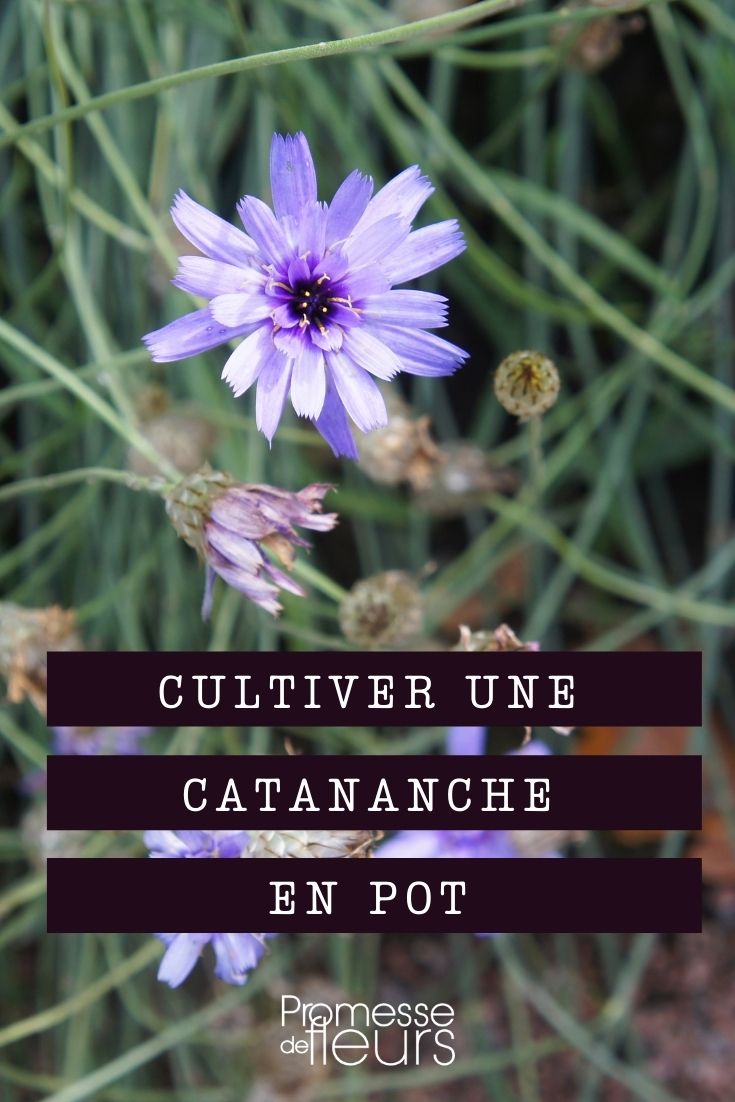































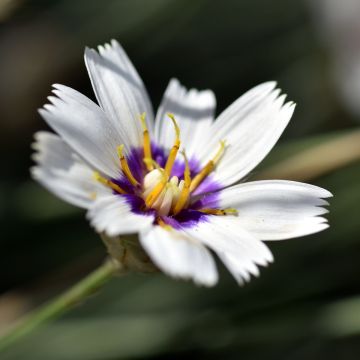
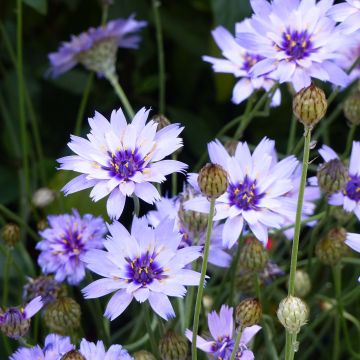
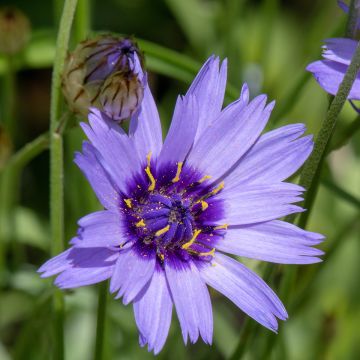
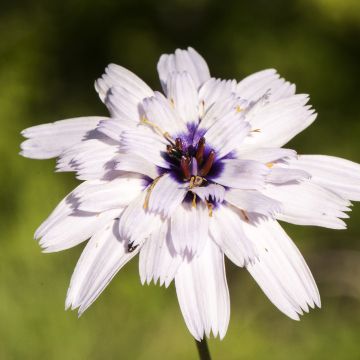
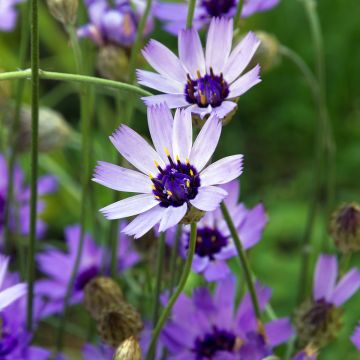
Comments